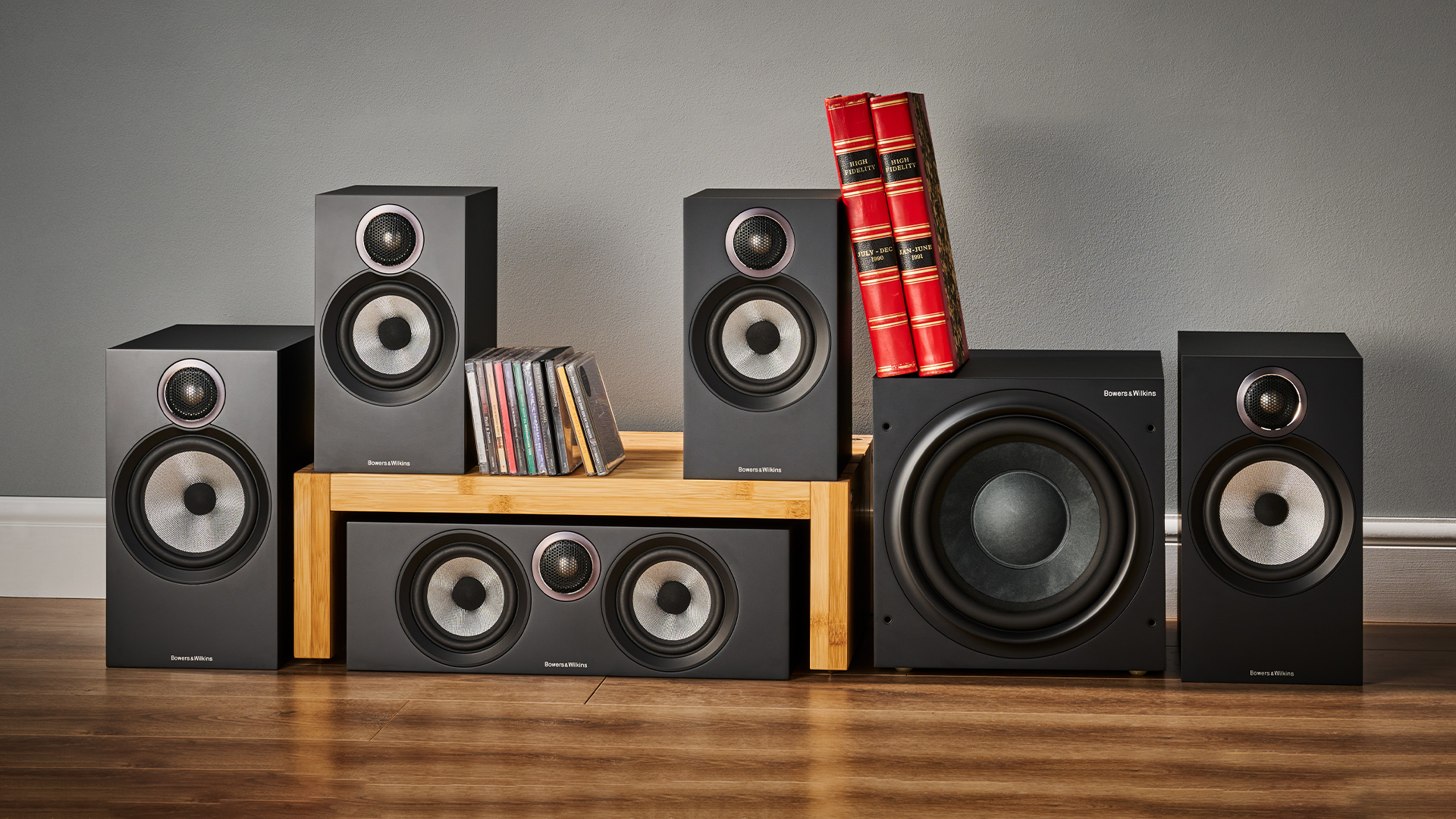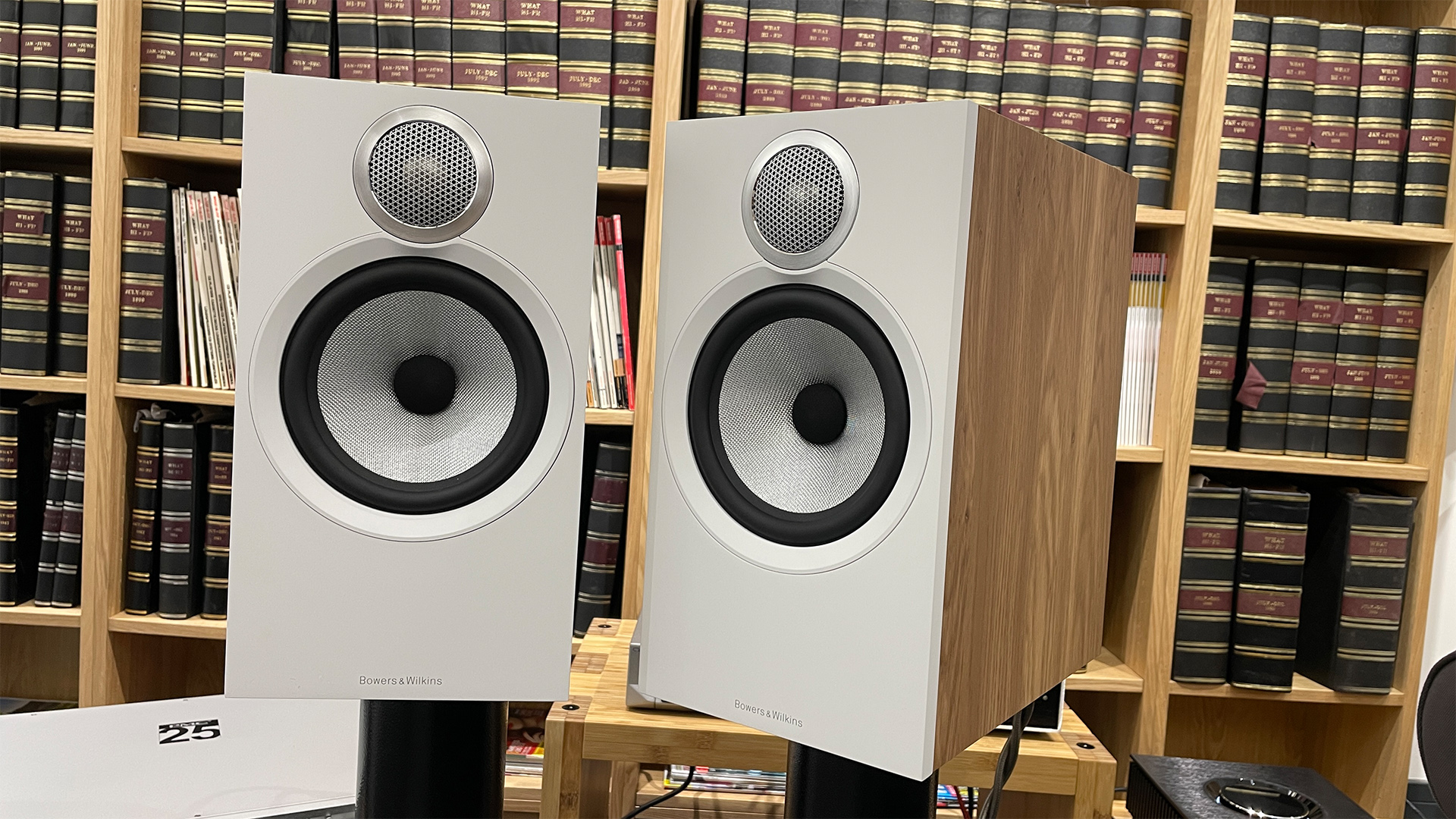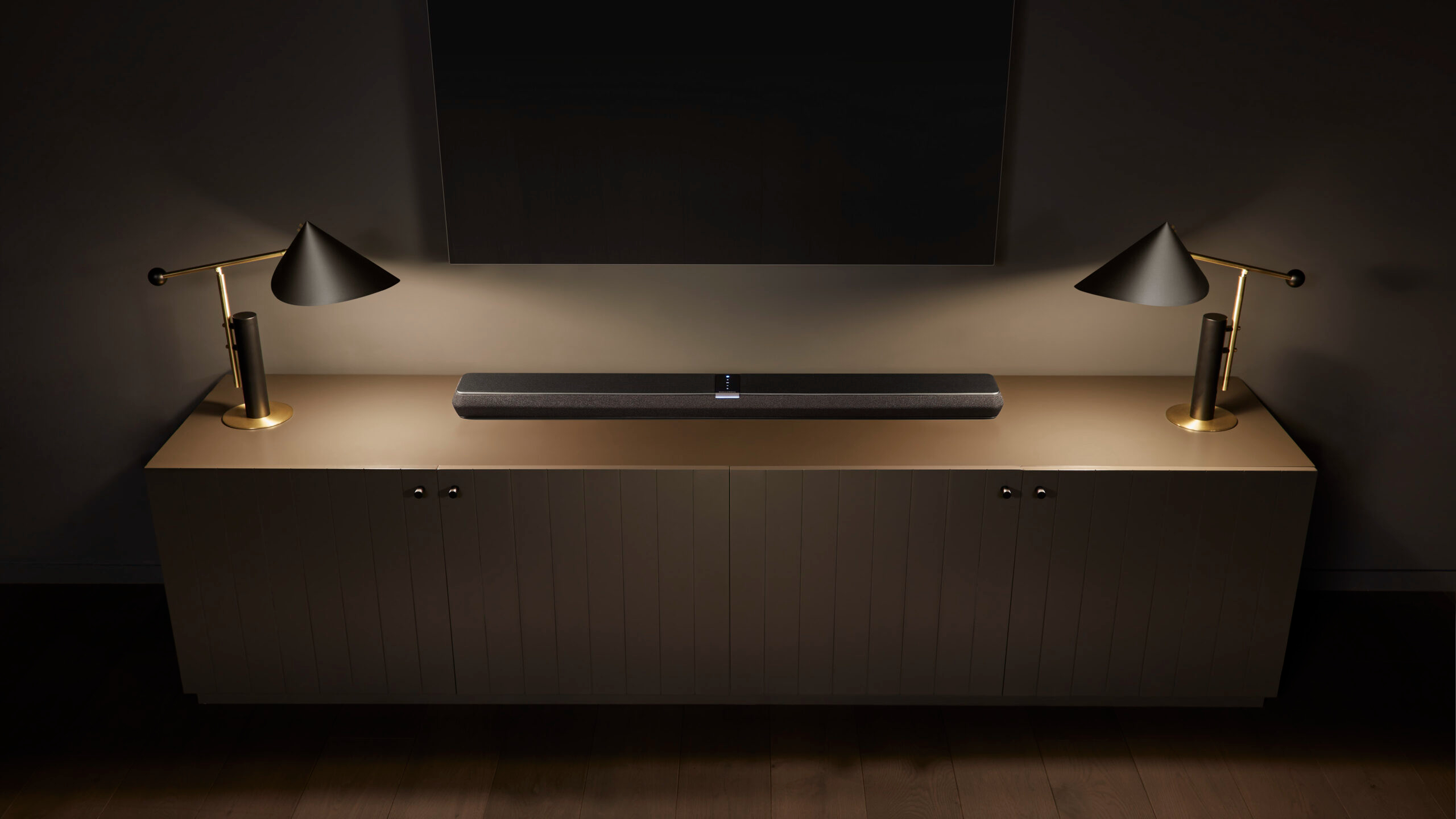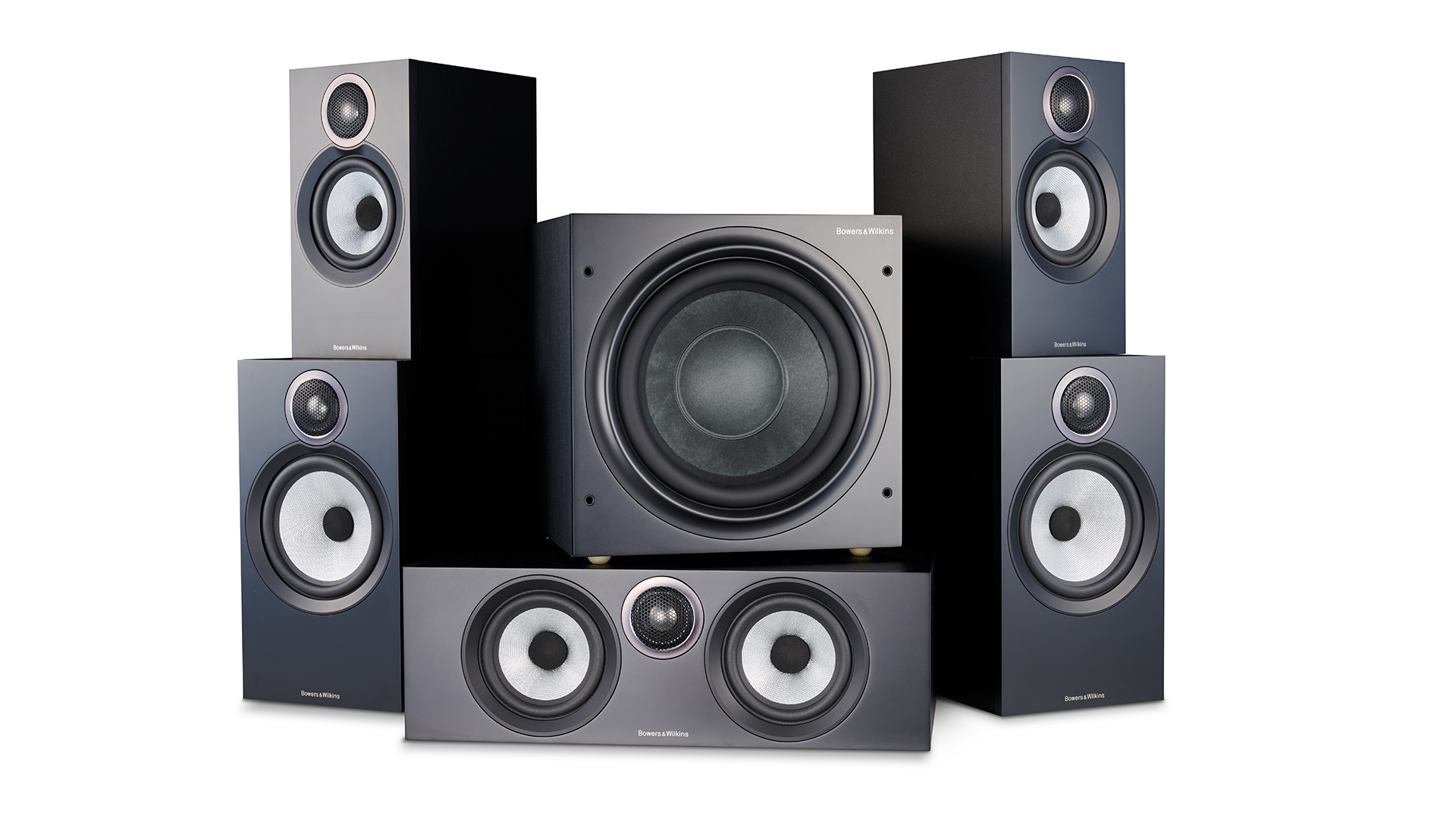B&W says the "centre is the key" for quality home cinema sound
We talk home cinema, the 600 S3 series speakers and more with B&W’s Andy Kerr

It's British Hi-Fi Week, meaning the spotlight is on iconic British audio brands, so who better to talk to than Bowers & Wilkins? We spoke to What Hi-Fi? alumnus turned Director of Product Marketing and Communications, Andy Kerr, about everything hi-fi, home cinema and even TV. We know it's hi-fi week, but I'd be remiss not to sneak in a hint of AV.
So before we get stuck in, let's do a crash course on Bowers & Wilkins' (or B&W as it is commonly referred to) history. Before it became the titan of hi-fi, home cinema, headphones and car audio that we know today, the company began life as a radio and electronics shop. Established by John Bowers and Roy Wilkins after the Second World War, the shop soon became the base of operations for Bowers to begin tinkering with audio equipment.
In 1966, Bowers started B&W Loudspeakers Ltd, and a year later the company's first commercially available speaker was launched, the P1. Since then, the company has been at the forefront of British audio innovation, and it has earned its fair share of Awards in the process.
In fact, it took home 2023's What Hi-Fi? Product of the Year in both the standmount speaker and home cinema speaker package categories, which brings us nearly to the first point of our conversation.
Do you believe that a good stereo speaker package always makes for a good home cinema speaker system?

With the 606 S3, 607 S3 and 606 & 607 S3 speaker package taking home Awards, it's evident that the prowess of the individual stereo pairs is integral to the success of this system as a whole. However, it's not quite as simple as that, as Kerr informs us there's actually a secret ingredient that ties home cinema packages together, and it's right under our noses.
"The key to an effective multi-channel system is the cohesion from speaker to speaker," says Kerr. "The stereo pair designer focuses first and foremost on the integration and cohesion of left to right, but there are sometimes challenges with the centre speaker." The centre speaker is, therefore, what Andy Kerr believes to be the key to a home cinema speaker system's success.
The trouble is that, as Kerr points out, the most cohesive systems use the same speaker in all positions, which isn't completely feasible for every set-up. Furthermore, a vertically oriented centre speaker simply would not work as it would block the screen, meaning horizontal is the only way to go. While this isn't necessarily the end of the world (we're yet to see a home cinema package that doesn't include a horizontal centre channel) it does pose questions about sound dispersion characteristics.
The latest hi-fi, home cinema and tech news, reviews, buying advice and deals, direct to your inbox.
So what's the answer? Kerr informs me that a lesson that B&W learned about 15 years ago is that "it's really important when developing home theatre packages out of stereo pair packages to tune as a coherent three". Changes in the design of centre channel speakers have been made since the brand's 2010 offerings, with the tweeter moving from a central position to a higher position, no longer in line with the mid/bass drivers. The goal here is to "better align the image from the left and right speakers that are on either side of it".
Ultimately, "The centre channel is the key," according to Kerr.
To what degree do you consider home cinema when creating stereo speakers?

"We do, absolutely," Kerr assures us, but the answer is more complicated than that. In reality, says Kerr, it depends on different markets and demands from consumers. Kerr is quick to point out the ever-increasing popularity of soundbars, more on which later.
B&W creates a dedicated centre speaker for each series, including the 600, 700 and 800 Series of speakers, meaning each can be configured into a home cinema speaker arrangement. There are also equivalent-level subwoofers for each speaker series.
While B&W doesn't hone in on either just hi-fi or home cinema use with many of its speakers, it develops speakers to work with both categories – you could say the best of both worlds. Kerr tells us there is a "develop together and share common technologies" ethos that allows for B&W's speakers to be used for both hi-fi and home cinema use cases.
That being said, B&W does offer specialised custom installs for dedicated home cinema use, but as the name suggests they're customised to specific home theatre builds, and they're rather premium.
Can a soundbar ever compete with a full home cinema speaker package?

Forgive me for asking this, because we already know the answer truthfully; but we always like to hear what individuals in the industry think of soundbars. Kerr has his own insight, stating that it depends on the room and the expectations of consumers.
"I think a modern soundbar is a significantly more sophisticated and complex beast than we were making 15 years ago," he says, and we'd certainly agree with Kerr in this regard, as soundbars now come with more features than ever before. "The introduction of side-firing and upward-firing elevation drive units and Dolby Atmos," is what Kerr makes note of here, as these features can be easily implemented into a soundbar; less so on a surround sound system, of course. There are also the benefits when it comes to space saving and budget too.
That all being said, the sound it produces is very much dependent on your space. Kerr notes the positioning, ceiling height and distance to walls can all factor into the sound performance, and ultimately a soundbar can only go in one place; under your TV.
As we expected, Kerr agrees that "the most convincing depiction of a home cinema experience is real speakers in real locations in a room". He furthers that sentiment by saying that it will "probably stay like that for quite a period of time because nothing quite beats that direct radiated presentation". He values the ability to precisely place a speaker in the correct position that will maximise sound quality over features such as phantom speakers (which a lot of soundbars use) that emulate the existence of speakers to produce surround sound.
However, Kerr does recognise the difference between enthusiast and non-enthusiast consumers, and the latter is where the soundbar market exists. Convincing someone who doesn't want to fill their room with speakers that a home cinema speaker package is worth it is no easy task, especially from a manufacturer standpoint.
Soundbars might not be sonic equals to home cinema speaker systems, but perhaps we shouldn't look too harshly upon them for that.
What was the inspiration behind the titanium dome tweeters on the 606 and 607 S3?

Bowers & Wilkins has experimented with various materials in the past when it comes to constructing tweeters within its speakers, with titanium being the latest development. Kerr explains that B&W has been exploring the use of titanium dome tweeters for around 16 years, and that its benefits over the use of aluminium mostly centre around distortion reduction.
Its stiffness is similar to aluminium which, as Kerr explains, impacts its pistonic behaviour. This means it moves up and down in a more regulated and consistent pattern, much like its piston namesake. Moving in a linear way is important, as if the driver bends or flexes in use, then it will distort the sound.
"The problem with titanium [is that] it was quite a lot heavier than aluminium, and that meant a significant impact on mass and therefore sensitivity. That created problems for the likely typical consumer that was looking into buying into the 600 Series of loudspeakers, as they tend to use more modestly sized amplifiers. So an insensitive pair of loudspeakers at that price didn't make sense, so we stayed with aluminium and worked to try and refine it."
Considering the 600 Series' price point and stature, we're certainly glad that B&W held off on advancing the material used in the 600 Series' dome tweeters until the time was right. Kerr continues to explain how the construction of the dome tweeters in the 600 Series played an integral part in deciding the material used.
The dome tweeter is actually constructed from two pieces, an inner dome that is lighter and thinner, and a dome ring around that which is slightly heavier and thicker and reinforces the inner section. Adapting that idea from the older models with aluminium drivers to titanium was no small feet of engineering, as Kerr explains that the new dome is the thinnest that the company makes.
At just 25 microns, the main portion of the dome is lighter and more sensitive, solving the roadblock that B&W came across when it first began experimenting with titanium in regards to compatibility with budget amplifiers. B&W also use a 30-micron ring around the titanium driver in order to reinforce it, thus reducing distortion.
Another benefit of titanium is its improved behaviour when it comes to damping; referring to how aluminium can react dramatically to signals, which can lead to a brightness to the tonality of the sound. Titanium, on the other hand, retains the resolution and detail of the aluminium dome, but tends to sound smoother and more refined.
The major inspiration behind moving to titanium is the change in standards around amplifiers. Kerr explains that, "Back in the 1990s, when the 600 Series were first developed, nobody was using Class D amplifiers," with a greater proportion of people using Class A/B. That has shifted in the last 15 years, with more people using cheaper mainstream amplifiers. The problem with that is that the 600 Series speakers are "quite revealing". The thinking here, then, was to create a speaker that sounds as good with a budget amplifier as it does with a larger Class A/B unit.
As a British hi-fi company, what do you think 'British sound' is?

Kerr importantly first notes that it's important to remember how well connected the British hi-fi industry is; each company understands how their products interact with one another, and many use products from other brands based on their specialities.
Onto the notion of British sound itself, Kerr highlights the importance of "rhythmic musicality, rather than something like sound pressure levels or scale".
"We don't sit there and try to extract a particular element of the music. It's not all about the bass, for example, but it's how does it cohesively come together in such a way that makes my foot tap?" The importance here is not on hitting certain figures, but instead on making speakers that connect the listener with the music. Listening enjoyment is put first and foremost, which Kerr affirms is a mantra for many British hi-fi brands such as Rega and PMC.
"Does it sound like real people, playing real instruments, in a real room, and do I feel like I'm listening to real musicians? Does it sound musical? Our emphasis is driven on that – we don't try to hit, for example, the target curve."
"What we're saying is when listen to it and when we measure it, do we enjoy it? Do we like it? Does it feel like what it’s delivering is, what we refer to as the 'true sound of the performance'?" Kerr infers that an authentic and musical sound reproduction is a high priority when B&W develops speakers.
"British sound, to me, is driven by a nation that loves music culturally. A nation where music is written strong and hard into the DNA of many, many thousands, if not millions, of people by music and by hi-fi. We've got a really powerful, influential music scene that's connected across the world and I think people here value music perhaps disproportionately higher than certain other people in other parts of the world," states Kerr, and frankly we couldn't agree more.
MORE:
Check out more of the latest news, reviews and features this British Hi-Fi Week
Read our full Bowers & Wilkins 607 S3 review
Lewis Empson is a Senior Staff Writer on What Hi-Fi?. He was previously Gaming and Digital editor for Cardiff University's 'Quench Magazine', Lewis graduated in 2021 and has since worked on a selection of lifestyle magazines and regional newspapers. Outside of work, he enjoys gaming, gigs and regular cinema trips.
